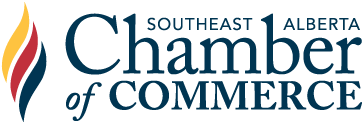Strengthened Budgeting for Disaster and Emergency Spending

Strengthened Budgeting for Disaster and Emergency Spending
Finance & Taxation - Provincial Policy
Issue
The recent accounting practice of the Government of Alberta was to budget zero dollars for disaster and emergency spending when the provincial budget is tabled. Since 2003 the government has spent over $4.6 billion on emergency and disaster relief but it does not budget for these expenditures at the start of the year. While Budget 2012 marked a shift in the province’s budgeting practice with an estimated $44 million being set aside for emergencies, this approach continues to underestimate the true cost of disasters and emergencies. This practice also creates challenges for budget planners and decision-makers in forecasting expenditures about the year-end budget outcomes that influence important public policy decisions. Improving the process would begin with budgeting for disaster and emergency spending using a five-year rolling average.
Background
Budgeting for disasters and emergencies is standard practice for businesses and individuals. We set aside funds in reserve in case of an emergency. The province has applied a similar approach with the Sustainability Fund, accessing the funds during difficult years to pay for needed services and programs in the event of unanticipated declines in resource revenues.
The same principle could be applied to budgeting for disasters and emergencies. Currently, the province reports disaster and emergency spending as a line item under program expenses in the Fiscal Summary. Prior to 2012 there was no set budget assigned for the expected cost of fighting wildfires, potential flooding, and the annual mountain pine beetle program. Rather, the province draws funding for disasters and emergencies from the Sustainability Fund on an as-needed basis (up to one per cent of total operating spending). Budget 2012 represents the first time in recent memory that the government has budgeted for disasters and emergencies, with an expected cost of $44 million for fiscal year 2012-13 and $17 million for fiscal year 2013-14.
The challenge in this regard is that these estimates are in no way tied to historical costs. According to the 2011 third quarter update, the province incurred $250 million on forest firefighting, $172 million on the Slave Lake wildfires, $105 million for municipal flooding, $38 million for the Agri-Recovery response, and $30 million to combat the mountain pine beetle infestation1. These are substantial and necessary expenditures amounting to $595 million, nearly half of which is a recurring annual cost that changes only moderately as a result of ongoing commitments to battling mountain pine beetle infestations, estimated at $46 million based on the last five year’s third quarter results.
The province will continue fighting forest fires as well as fighting the mountain pine beetle for the foreseeable future, and it would be prudent to budget ahead of time for these costs in light of their recurring nature. This will provide budget planners with a more accurate snapshot early in the fiscal year of the expected actual expense, and enable more accurate financial reporting and accountability to the taxpayer.
Recommendations
The Alberta Chamber of Commerce recommends that the Government of Alberta:
- Budget for declared emergencies and disasters on the basis of a rolling historical five-year average. If this had been done in Budget 2011-12, then the government would have budgeted $415 million with its latest forecast showing a total expense of $595 million.
- Move mountain pine beetle suppression disaster spending into the Ministry of Sustainable Resource Development’s budget as a program expense.
Resources
- Government of Alberta. Budget 2011-12 3rd Quarter Fiscal Update. February 2011. http://www.finance.alberta.ca/publications/budget/quarterly/2011_3rdq/report.pdf
